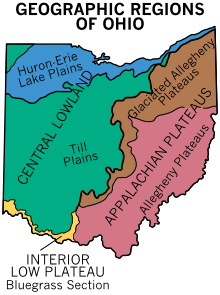Medical Transports to and from Ohio
Long distance medical transportation for Ohio to anywhere in the country. We specialize in helping families transport loved ones across the United States or across the globe. We provide National and International Commercial Medical Escorts, National and International Air Ambulance Service and National Long Distance Ground Transportation
Medical Transport Services provides high quality Long Distance Medical Transportation for Ohio. We provide transportation to all of the lower 48 states. Our minimum transport distance is 200 miles with no maximum distance. Medical Transport Services (MTS) is committed to providing high quality, comfortable, reliable and affordable long distance medical transport to its valued customers. Customer care and safety are our top two priorities. MTS will commit its resources to safe and environmentally sound operating practices that will result in providing our customers with the assurance of safe, comfortable and reliable long distance medical escort service and our employees with a safe work environment.
Transporting loved ones over a long distance can be very difficult for family members. Medical Transport Services helps to remove that burden by making all arrangements to transport your loved one. We start by listening to your wishes and desires. Then we work with the departing and receiving facilities to handle all of the details. We build the trip plan based on all of the requirements and assign the best crew available based on the patient and conditions of the transport. We communicate and coordinate with family members throughout the entire process.
It is our goal to be recognized as the BEST among all of the long distance medical transportation providers in the country. To do that, we hire only the best employees available. Our transport fleet is all Mercedes Benz vehicles. Our interiors are designed with high quality materials for luxury and comfort. The company was built from the ground up with the customer and patient in mind.
If you would like to know the cost of a long distance medical transport we would be happy to assist and provide you a free estimate. For Long Distance Medical Transportation for Ohio Please complete or click the FREE QUOTE .
Ohio Geography
Ohio’s geographic location has proven to be an asset for economic growth and expansion. Because Ohio links the Northeast to the Midwest, much cargo and business traffic passes through its borders along its well-developed highways. Ohio has the nation’s 10th largest highway network, and is within a one-day drive of 50% of North America’s population and 70% of North America’s manufacturing capacity.[28] To the north, Lake Erie gives Ohio 312 miles (502 km) of coastline,[29] which allows for numerous cargo ports. Ohio’s southern border is defined by the Ohio River (with the border being at the 1792 low-water mark on the north side of the river),[30] and much of the northern border is defined by Lake Erie. Ohio’s neighbors are Pennsylvania to the east, Michigan to the northwest, Lake Erie to the north, Indiana to the west, Kentucky on the south, and West Virginia on the southeast. Ohio’s borders were defined by metes and bounds in the Enabling Act of 1802 as follows:
Bounded on the east by the Pennsylvania line, on the south by the Ohio River, to the mouth of the Great Miami River, on the west by the line drawn due north from the mouth of the Great Miami aforesaid, and on the north by an east and west line drawn through the southerly extreme of Lake Michigan, running east after intersecting the due north line aforesaid, from the mouth of the Great Miami until it shall intersect Lake Erie or the territorial line, and thence with the same through Lake Erie to the Pennsylvania line aforesaid.
The Ohio coast of Lake Erie.
Ohio is bounded by the Ohio River, but nearly all of the river itself belongs to Kentucky and West Virginia. In 1980, the U.S. Supreme Court held that, based on the wording of the cessation of territory by Virginia (which at that time included what is now Kentucky and West Virginia), the boundary between Ohio and Kentucky (and, by implication, West Virginia) is the northern low-water mark of the river as it existed in 1792.[30] Ohio has only that portion of the river between the river’s 1792 low-water mark and the present high-water mark.
The border with Michigan has also changed, as a result of the Toledo War, to angle slightly northeast to the north shore of the mouth of the Maumee River.
Much of Ohio features glaciated till plains, with an exceptionally flat area in the northwest being known as the Great Black Swamp. This glaciated region in the northwest and central state is bordered to the east and southeast first by a belt known as the glaciated Allegheny Plateau, and then by another belt known as the unglaciated Allegheny Plateau. Most of Ohio is of low relief, but the unglaciated Allegheny Plateau features rugged hills and forests.
The rugged southeastern quadrant of Ohio, stretching in an outward bow-like arc along the Ohio River from the West Virginia Panhandle to the outskirts of Cincinnati, forms a distinct socio-economic unit. Geologically similar to parts of West Virginia and southwestern Pennsylvania, this area’s coal mining legacy, dependence on small pockets of old manufacturing establishments, and distinctive regional dialect set this section off from the rest of the state. In 1965 the United States Congress passed the Appalachian Regional Development Act, at attempt to “address the persistent poverty and growing economic despair of the Appalachian Region.”[31] This act defines 29 Ohio counties as part of Appalachia.[32] While 1/3 of Ohio’s land mass is part of the federally defined Appalachian region, only 12.8% of Ohioans live there (1.476 million people.)[33]
Significant rivers within the state include the Cuyahoga River, Great Miami River, Maumee River, Muskingum River, and Scioto River. The rivers in the northern part of the state drain into the northern Atlantic Ocean via Lake Erie and the St. Lawrence River, and the rivers in the southern part of the state drain into the Gulf of Mexico via the Ohio River and then the Mississippi.
The worst weather disaster in Ohio history occurred along the Great Miami River in 1913. Known as the Great Dayton Flood, the entire Miami River watershed flooded, including the downtown business district of Dayton. As a result, the Miami Conservancy District was created as the first major flood plain engineering project in Ohio and the United States.[34]
Grand Lake St. Marys in the west central part of the state was constructed as a supply of water for canals in the canal-building era of 1820–1850. For many years this body of water, over 20 square miles (52 km2), was the largest artificial lake in the world. It should be noted that Ohio’s canal-building projects were not the economic fiasco that similar efforts were in other states. Some cities, such as Dayton, owe their industrial emergence to location on canals, and as late as 1910 interior canals carried much of the bulk freight of the state.
Climate
Köppen climate types in Ohio
The climate of Ohio is a humid continental climate (Köppen climate classification Dfa/Dfb) throughout most of the state except in the extreme southern counties of Ohio’s Bluegrass region section which are located on the northern periphery of the humid subtropical climate (Cfa) and Upland South region of the United States. Summers are typically hot and humid throughout the state, while winters generally range from cool to cold. Precipitation in Ohio is moderate year-round. Severe weather is not uncommon in the state, although there are typically fewer tornado reports in Ohio than in states located in what is known as the Tornado Alley. Severe lake effect snowstorms are also not uncommon on the southeast shore of Lake Erie, which is located in an area designated as the Snowbelt.
Although predominantly not in a subtropical climate, some warmer-climate flora and fauna does reach well into Ohio. For instance, a number of trees with more southern ranges, such as the blackjack oak, Quercus marilandica, are found at their northernmost in Ohio just north of the Ohio River. Also evidencing this climatic transition from a subtropical to continental climate, several plants such as the Southern magnolia (Magnolia grandiflora), Albizia julibrissin (mimosa), Crape Myrtle, and even the occasional Needle Palm are hardy landscape materials regularly used as street, yard, and garden plantings in the Bluegrass region of Ohio; but these same plants will simply not thrive in much of the rest of the State. This interesting change may be observed while traveling through Ohio on Interstate 75 from Cincinnati to Toledo; the observant traveler of this diverse state may even catch a glimpse of Cincinnati’s common wall lizard, one of the few examples of permanent “subtropical” fauna in Ohio.
| Location | July (°F) | July (°C) | January (°F) | January (°C) |
|---|---|---|---|---|
| Columbus | 85/65 | 29/18 | 36/22 | 2/–5 |
| Cleveland | 82/64 | 28/18 | 34/21 | 1/–5 |
| Cincinnati | 86/66 | 30/19 | 39/23 | 3/–5 |
| Toledo | 84/62 | 29/17 | 32/18 | 0/–7 |
| Akron | 82/62 | 28/16 | 33/19 | 0/–7 |
| Dayton | 87/67 | 31/19 | 36/22 | 2/–5 |
| Canton | 82/62 | 28/16 | 33/19 | 1/–7 |
Records
The highest recorded temperature was 113 °F (45 °C), near Gallipolis on July 21, 1934.[36] The lowest recorded temperature was −39 °F (−39 °C), at Milligan on February 10, 1899,[37] during the Great Blizzard of 1899.[38]
Transportation
Ground travel
Many major east-west transportation corridors go through Ohio. One of those pioneer routes, known in the early 20th century as “Main Market Route 3”, was chosen in 1913 to become part of the historic Lincoln Highway which was the first road across America, connecting New York City to San Francisco. In Ohio, the Lincoln Highway linked many towns and cities together, including Canton, Mansfield, Wooster, Lima, and Van Wert. The arrival of the Lincoln Highway to Ohio was a major influence on the development of the state. Upon the advent of the federal numbered highway system in 1926, the Lincoln Highway through Ohio became U.S. Route 30.
Ohio also is home to 228 miles (367 km) of the Historic National Road, now U.S. Route 40.
Ohio has a highly developed network of roads and interstate highways. Major east-west through routes include the Ohio Turnpike (I-80/I-90) in the north, I-76 through Akron to Pennsylvania, I-70 through Columbus and Dayton, and the Appalachian Highway (State Route 32) running from West Virginia to Cincinnati. Major north-south routes include I-75 in the west through Toledo, Dayton, and Cincinnati, I-71 through the middle of the state from Cleveland through Columbus and Cincinnati into Kentucky, and I-77 in the eastern part of the state from Cleveland through Akron, Canton, New Philadelphia and Marietta south into West Virginia. Interstate 75 between Cincinnati and Dayton is one of the heaviest traveled sections of interstate in Ohio.
Ohio also has a highly developed network of signed state bicycle routes. Many of them follow rail trails, with conversion ongoing. The Ohio to Erie Trail (route 1) connects Cincinnati, Columbus, and Cleveland. U.S. Bicycle Route 50 traverses Ohio from Steubenville to the Indiana state line outside Richmond.[121]
Ohio has several long-distance hiking trails, the most prominent is the Buckeye Trail which is a 1,444-mile (2,324 km)[1] hiking trail that loops around the state of Ohio. Part of it is on roads and part is on wooded trail. Additionally, the North Country Trail (the longest of the eleven National Scenic Trails authorized by Congress) and the American Discovery Trail (a system of recreational trails and roads that collectively form a coast-to-coast route across the mid-tier of the United States) pass through Ohio. Much of these 2 trails coincide with the Buckeye Trail.
Air travel
Ohio has 5 international airports, 4 commercial and 2 military. The 5 international includes Cleveland Hopkins International Airport, John Glenn Columbus International Airport, and Dayton International Airport, Ohio’s third largest airport. Akron Fulton International Airport handles cargo and for private use. Rickenbacker International Airport is one of two military airfields which is also home to the 7th largest FedEx building in America.[citation needed] The other military airfield is Wright Patterson Air Force Base which is one of the largest Air Force bases in the United States. Other major airports are located in Toledo and Akron.
Cincinnati/Northern Kentucky International Airport is in Hebron, Kentucky and therefore is not listed above.
Transportation lists




